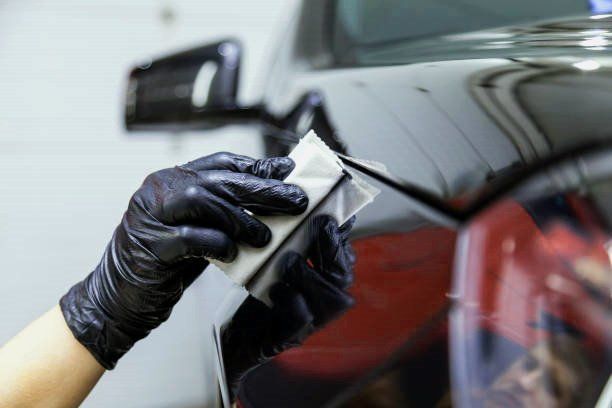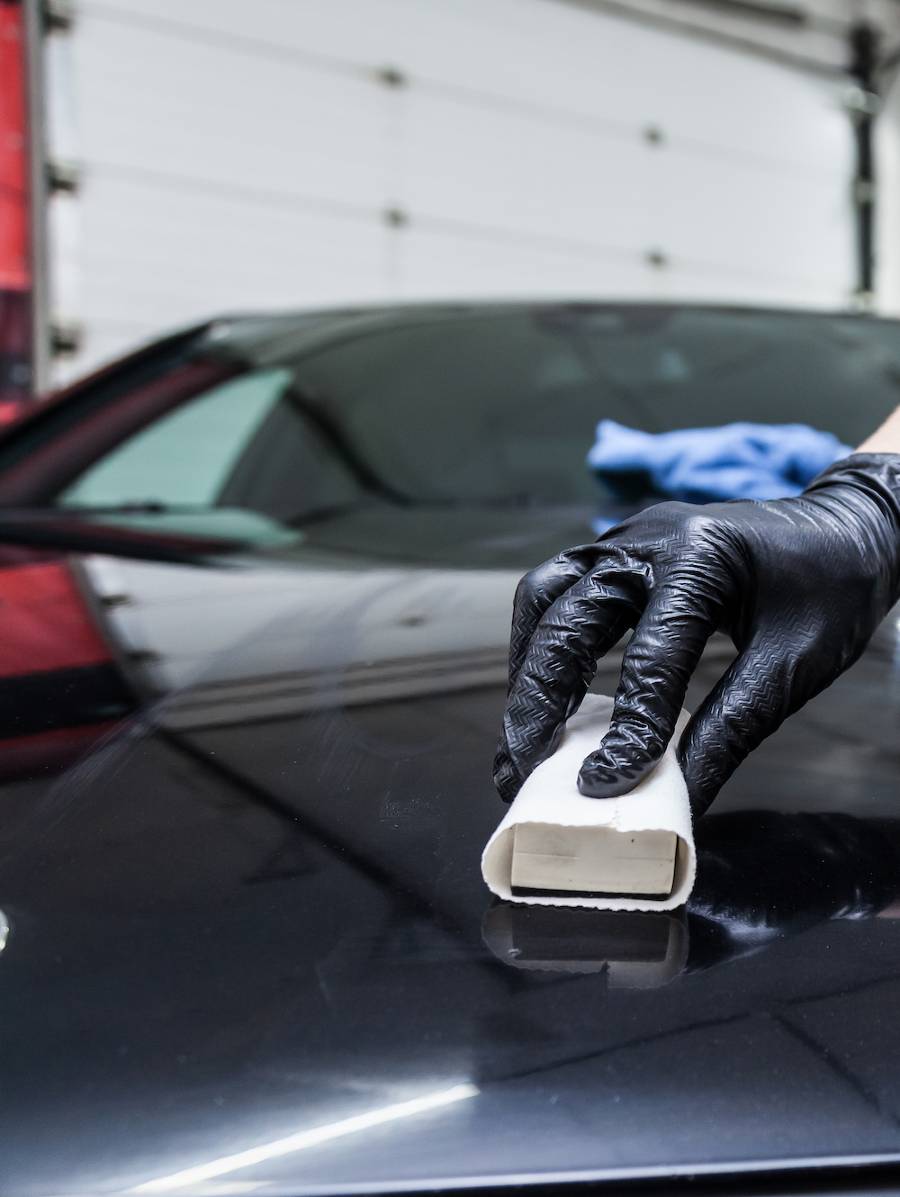The Duty of Ceramic Finish in Safeguarding Your Car's Paint From Environmental Damages
Ceramic finishing has arised as an advanced solution for auto owners looking for to protect the honesty of their automobile's exterior. By developing a robust chemical bond with the paint, this innovative innovation supplies a powerful obstacle against numerous environmental risks, such as UV rays, acid rainfall, and pollutants. However, recognizing the extensive advantages and the complexities of the application procedure is important for optimizing its effectiveness. As we explore the nuances of ceramic layer, it becomes noticeable that the choice to apply this protective procedure can substantially affect your car's durability and visual.
What Is Ceramic Coating?
Ceramic covering is a sophisticated liquid polymer related to the outside surfaces of an automobile, created to offer a long lasting layer of security for the paint. This ingenious option develops a chemical bond with the car's factory paint, developing a hydrophobic and resilient guard. The layer includes nanoparticles that fill out the tiny flaws in the paint, leading to a smooth surface that enhances gloss and shine.
Commonly, ceramic layers are readily available in numerous formulas, enabling different levels of protection and longevity. While some products can last for a number of months, others supply security for a number of years, relying on the density of the application and ecological elements. The application procedure calls for careful preparation, including cleaning, decontaminating, and polishing the lorry's surface area to guarantee optimal attachment of the finishing.

Advantages of Ceramic Covering
Among the main advantages of using a ceramic coating is the exceptional security it offers to vehicle paint. This advanced layer creates a long lasting layer that shields the vehicle's surface area from a range of environmental dangers, including UV rays, acid rainfall, bird droppings, and tree sap. By offering this durable protection, ceramic finishings considerably lower the danger of fading and etching, preserving the auto's visual appeal gradually.
In addition to defense, ceramic coverings are renowned for their hydrophobic buildings, which ward off water and dirt, making it less complicated to maintain a tidy vehicle. This self-cleaning result decreases the regularity of washing, saving both time and resources. Ceramic finishings boost the deepness of the paint's gloss, resulting in a sleek and vibrant appearance that boosts the overall look of the car.
One more significant advantage is the long life of ceramic layers. Unlike traditional waxes or sealants that require frequent reapplication, ceramic coverings can last a number of years, providing an economical option for cars and truck proprietors looking for long-term protection. In general, buying ceramic layer brings about improved resilience, decreased upkeep, and continual visual appeal for auto paint.
How Ceramic Coating Works
A ceramic covering operates through a chemical bonding procedure that produces a protective layer on the lorry's paint surface area. This ingenious service utilizes innovative nanotechnology, where tiny fragments of silica are put on hold in a fluid type - ceramic coating. Upon application, these particles bond with the factory paint, developing a hydrophobic and durable layer that boosts the lorry's surface area
The primary part of ceramic finishings, silicon dioxide (SiO2), contributes to the covering's stamina and resilience. When healed, the finish transforms right into a difficult, glass-like surface that shields the paint from ecological contaminants such as dust, UV rays, bird droppings, and tree sap. This molecular bond leads to a surface area that is not only immune to scrapes however also easier to clean, as dust and grime are much less likely to adhere.
Additionally, the hydrophobic properties of ceramic finishes create water to grain and slide off, decreasing the chances of water places and mineral down payments. This protective obstacle effectively extends the life of the paint and keeps the car's visual appeal, supplying cars and truck owners a long-lasting option for paint protection.
Application Process of Ceramic Layer
When considering the application of ceramic coating, preparation is key to achieving optimum outcomes. Any scratches or flaws should be dealt with at this stage, as the covering will bond with the surface area below.

Ceramic finish is after that applied in small areas, usually utilizing an applicator pad. It is important to work in also strokes, making certain consistent protection. The covering should be permitted to cure for a specified time, which can vary depending upon the product used. After the first application, a top notch microfiber towel is utilized to buff the surface area, improving gloss and guaranteeing a smooth finish. Ultimately, the vehicle should be left to cure in a controlled environment to enable the coating to totally bond with the paint.
Long-Term Maintenance and Treatment
Accomplishing an effective ceramic covering application establishes the foundation for long-lasting defense, however correct maintenance is crucial to preserving its benefits. Normal washing is necessary; using a pH-neutral cars and truck shampoo will aid maintain the finishing's honesty without triggering damage. Prevent automated auto washes that usage unpleasant materials, as they can jeopardize the layer's surface.

Furthermore, applying a ceramic covering maintenance spray can improve the existing layer, supplying an added increase in protection and shine. It's a good idea to perform this every 3 to six months, relying on environmental direct exposure.
Last but not least, find here parking in shaded areas or utilizing automobile covers can stop long term direct exposure to dangerous UV rays and ecological impurities, additionally extending the life of your ceramic finish. By adhering to these maintenance techniques, you can ensure your automobile's surface stays protected and visually appealing for years ahead.
Verdict
In recap, ceramic look at here now finishing acts as an important protective measure for auto paint, properly securing automobiles from a variety of environmental hazards. Its capacity to produce a robust hydrophobic obstacle not just enhances aesthetic allure however also significantly lowers the regularity and intensity of upkeep required. The lasting nature of this advanced polymer emphasizes its value in preserving lorry integrity and appearance, inevitably contributing to a more aesthetically enticing and sturdy automotive finish.
Ceramic layer is an innovative liquid polymer used to the outside surface areas of a car, designed to offer a resilient layer of protection for the paint. Ceramic coverings improve the deepness of the paint's gloss, resulting in a polished and important source vibrant appearance that raises the total look of the lorry.
A ceramic finishing runs through a chemical bonding procedure that develops a protective layer on the lorry's paint surface.The primary component of ceramic finishes, silicon dioxide (SiO2), adds to the layer's toughness and durability.In recap, ceramic finish offers as an important safety action for automotive paint, properly securing vehicles from a range of ecological risks.
Comments on “Ceramic Coating vs. Traditional Wax: Which is Right for Your Vehicle?”